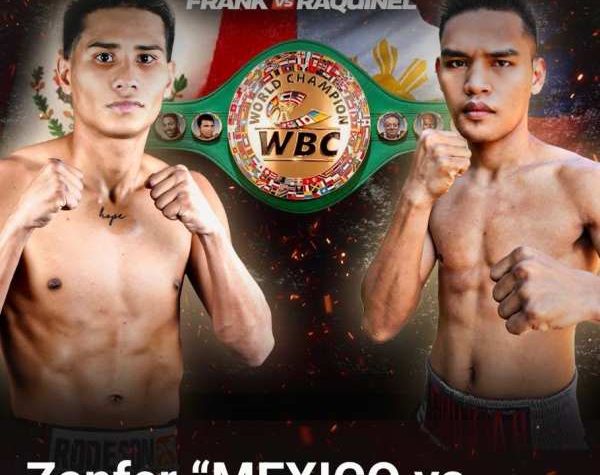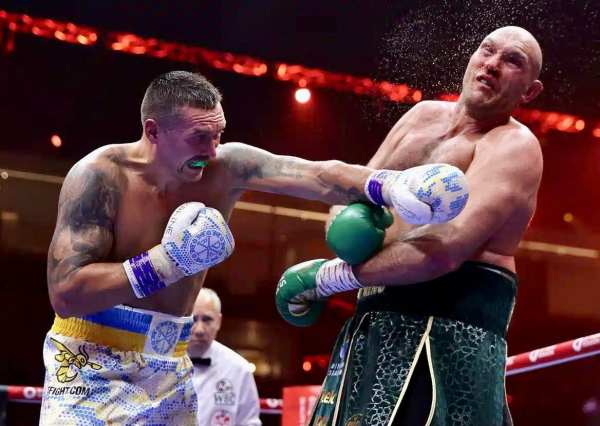
By Shaun Al-Shatti@shaunalshatti
MMAfighting.com
The recent adverse findings in Jon Jones’ USADA drug test results popped up much earlier than December, according to UFC executive Jeff Novitzky.
Novitzky, the UFC’s vice president of athlete health and performance, appeared Thursday on The Joe Rogan Experience to explain Jones’ recent drug-testing situation and the UFC’s decision to uproot UFC 232 from Las Vegas to Los Angeles on less than a week’s notice. Novitzky revealed that Jones first tested positive for trace amounts of a longterm metabolite of oral turinabol in an Aug. 29 drug screening conducted by USADA. That test discovered eight picograms of the oral turinabol metabolite in Jones’ system and followed an Aug. 9 drug screening that came back clean. Novitzky said that Jones’ next drug test, on Sept. 18, also came back positive for 19 picograms of the same longterm oral turinabol metabolite.
After that, four consecutive drug tests came back clean for Jones — on Sept. 21, Oct. 2, Oct. 11, and Nov. 14 — before the longterm metabolite reemerged in an out-of-competition USADA test collected on Dec. 9 in the range of 60 to 80 picograms.
Novitzky said USADA shared the findings with experts and conducted an investigation that determined Jones’ low levels for the oral turinabol metabolite were merely “residual” from the Sept. 2017 test Jones failed for the same substance, and that there was “no evidence of any re-administration.” USADA concluded that the picograms in Jones’ system amounted to no performance-enhancing benefit whatsoever.
By that point, however, the Nevada Athletic Commission (NAC) was unwilling to license Jones for a fight without first holding a hearing. And with UFC 232 fast approaching, that led the promotion to move the event to a different state entirely.
“I think it was December 6th, [USADA] sent a letter to us and they sent a letter to the Nevada state athletic commission saying, ‘Just you’re aware, over the last six months, early in this six months we’ve seen a reemergence of this long-term in Jon’s samples.’” Novitzky explained Thursday on The Joe Rogan Experience.
“USADA didn’t need to notify them. They thought, out of an abundance of caution, let’s let Nevada know that this issue exists.
“That’s all good, Nevada gets this. I talk with them, they’re like, ‘Whoa, this is concerning, but we don’t see anything in our jurisdiction here, so I certainly hope that no subsequent tests show up positive because that could be an issue.’ And sure enough, USADA collects a sample from Jon on 12/9, they expedited the results because they knew a fight was coming up and they do that now when fights are close or the collections are done close to a fight, and here he pulses back up to between 60 and 80 picograms.
“There’s some misconception out there,” Novitzky continued. “[The NAC] did not say this fight is absolutely not happening next week. In fact, they, I think, were understanding of these issues but said, ‘Look, optically, this doesn’t look great, and we feel that, out of an abundance of caution, that we need to have a public hearing and be very transparent about this, because this is some weird shit.’”
Jones is tentatively scheduled to appear before the NAC at a hearing in January to discuss his recent test results with the commission.
In the meantime, the California State Athletic Commission — led by executive director Andy Foster, who is familiar with Jones’ case stemming from his failed UFC 214 drug test and suspension — agreed to license Jones to fight Alexander Gustafsson for the vacant UFC light heavyweight title in Los Angeles at UFC 232. The Association of Boxing Commissions has subsequently come out in support of Foster’s decision, citing USADA’s determination that the reemergence of the oral turinabol metabolite found in Jones’ system in three different tests since August is not the result of re-ingestion, but rather is a residual longterm substance left over from Jones’ previous drug-testing failures.
“Look, I’m not an expert,” Novitzky said. “I don’t profess to be. My background is in finance and accounting. I traced the money back in the old days, but I know who those experts are out there in the world, and these are them. They’re, by putting these things in writing, putting their reputations on the line now and forever going forward. They’re not going to do something like that because the UFC pays USADA to administer a program or because Jon Jones is a popular fighter and they want to see him fight this weekend. That’s just not the way this world works. … Experts like this are very, very conservative when it comes to talking in absolutes like this. They don’t normally do it.
“These experts said based on these low levels of picograms, there’s no performance-enhancing benefit, and that’s an important point,” Novitzky continued. “Because if you would’ve told UFC, ‘Look, this is still remnants from a year-and-a-half ago, but we can’t rule out that he’s not getting a performance-enhancing benefit from it’ — well, in that instance, I’ll tell you and I stand by this, I would leave this company if somebody told me otherwise. If there was any indication that there would be a benefit from them even though it technically wasn’t a violation, I’m not going to stand by while anybody licenses that guy to fight.”
Novitzky floated several theories out about the timing and reemergence of the longterm metabolite in Jones’ system, from it being affected by weight-cutting to it merely being affected by Jones’ activity in the gym. Ultimately, though, he admitted the science is not yet advanced enough to understand what causes this effect.
He also dismissed the idea the Jones is micro-dosing, stating that micro-dosing is commonly done with endogenous substances and not exogenous substances, which is the category oral turinabol metabolite falls under.
Novitzky said there have been several instances of similar circumstances with a reoccurring longterm oral turinabol metabolite in other sports, and even one other such example in the UFC: Grant Dawson, a featherweight prospect who earned a contract on Dana White’s Contender Series and whose USADA case was recently dismissed after arbitration.
“[Dawson’s] first test, he tests positive for an M3 metabolite, low levels,” Novitzky said. “He goes to arbitration, argues, testifies under oath, ‘I’ve never heard of this substance. I’ve never taken it. I would never cheat. Here are all the supplements I was using. I can’t find it.’ The arbitrator hears the hearing. USADA goes to them and says, ‘Hold on a second, we’re looking into this matter, talking to baseball,’ whatever. USADA comes out that, ‘Hey, we can’t prove that this didn’t enter his [system] a year before that disclosure required him to disclose what he was using, so he was basically let off and eligible. So Jon’s not the only person in the UFC that this has happened to, notwithstanding other professional sports leagues, other Olympics. It’s happened to other athletes, he’s not the only one.”
Novitzky cautioned that the science behind measuring metabolites on the picogram level is still relatively new and undeveloped, and that even the most exact test results still come back with a plus/minus margin of error of around 20 picograms.
Novitzky called that variance an “inexact science.”
“Be real careful if you’re going to be the guy with the pseudoscience out there saying, ‘Wait a second, Jon jumped from 20 to 60 from September to December, and that means he re-ingested it,’” Novitzky said.
“Slow your roll on that. That it’s such a small, incomprehensible level, that we don’t really know what variances are going to look like. Now I think if we saw jumps in Jon from single digit eight or nine picograms to multiple hundred digit picograms, there would be a concern and maybe some re-administration. But the experts I’ve spoken to, when you’re talking variability of 10, 20, 30, 40, it’s not that significant at the picogram level.”
Novitzky added that Jones was “one of the most, if not the most tested athlete over these last six months,” and dismissed critics who claim that Jones is getting off easy in a situation where many others fighters would be punished severely.
“Look, nobody’s saying and I’m certainly not saying that Jon didn’t do anything wrong,” Novitzky said. “He obviously did. Jon has, two times now, tested positive for prohibited substances. However, in both occasions, arbitrators have determined that it was not done intentionally. So anyone who says that Jon’s getting off light on this, he’s been suspended for almost two-and-a-half years with a lack of evidence of any intentional use or cheating. You know how much money he’s probably lost in those two-and-a-half years? How many tens of millions of dollars? His reputation? Anybody who says that he got off scot-free on this, I would argue the otherwise. He was held to the strictest of liability standards out there. Someone at the top of their game, money-earning potential like him.”
Jones returns from a 17-month absence on Saturday to challenge Gustafsson at UFC 232.





More News
Quiñonero fights Verdadero in Resbak 2
Resbak 2 at Malungon, Sarangani Province on July 12
Garde stops Baliente in 1st round in “Resbak”